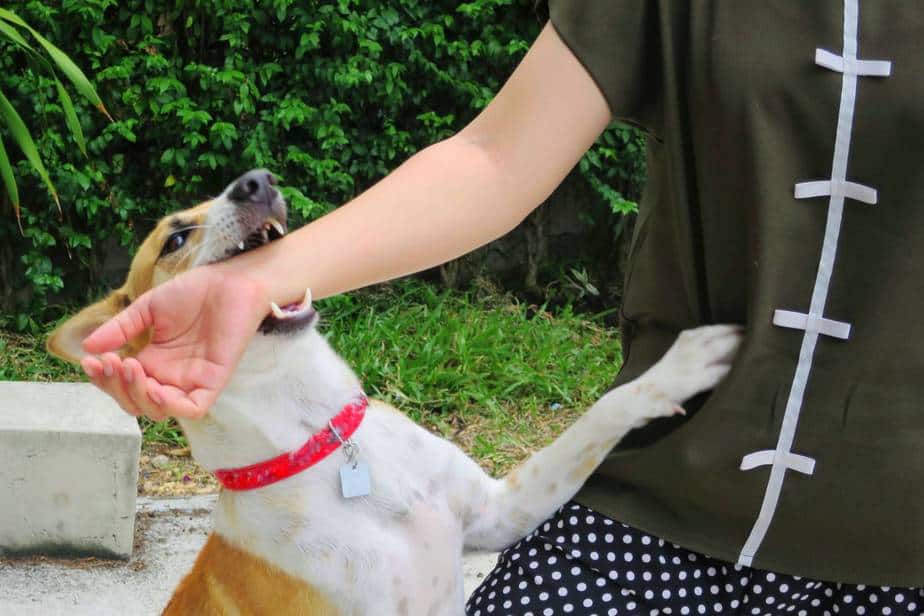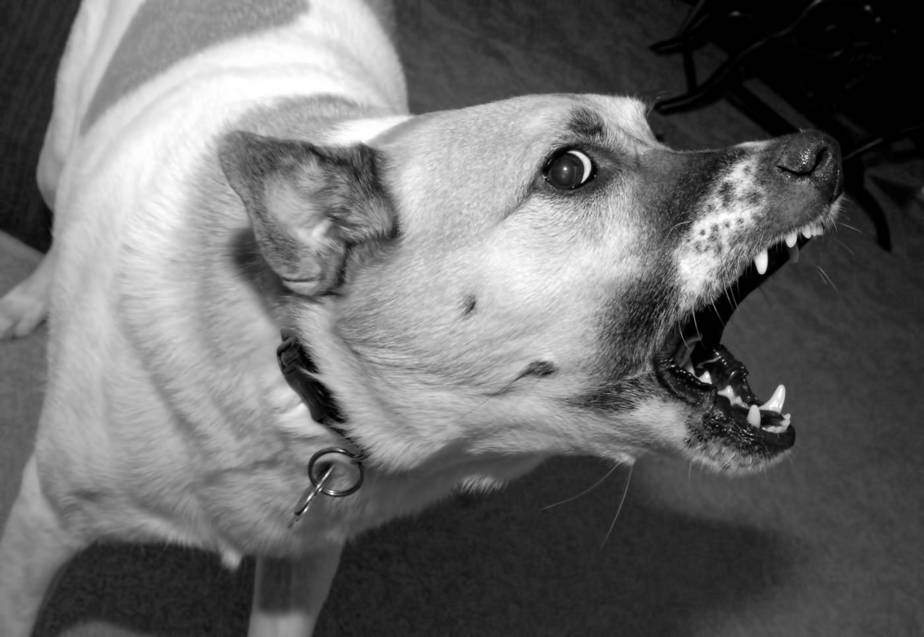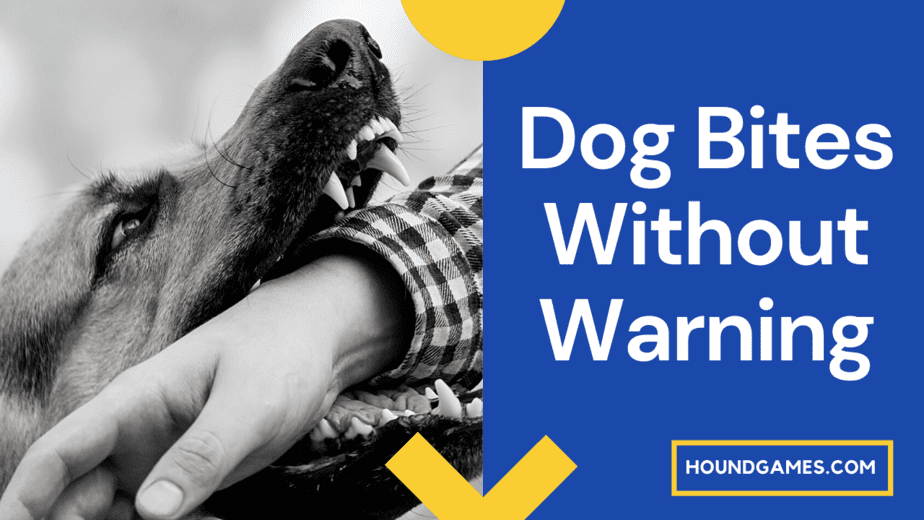Too often, dog behaviorists and trainers will face panicked owners claiming their dog attacked and bit for no reason. Sometimes, these are nips without warning, and sometimes these can be terrifying and sudden bites. Whatever the case, usually everything seemed fine and calm. Then, for some reason, a dog became aggressive or even bit. And, often, nobody saw it coming.
The stakes are high with dog biting and aggression since it can lead to lawsuits, injury, and tragic euthanasia. Sadly, there is no single reason a dog may bite without warning, but we will give an overview of some of the leading causes and what can be done about it.
Why do dogs bite without warning?
The fact of the matter is that dogs actually very rarely bite without warning. The majority of bites or nips that appear to happen without notice did, in fact, have multiple red flags that humans or even other dogs likely ignored or weren’t aware of.
We will look at some of the body language signals that may be missed by humans. However, there are cases where a nip or aggression can appear without warning.
Let’s take a typical example and look at it from a dog’s perspective. Imagine you are a canine sensitive to loud noises. You don’t like strangers much, and busy body language threatens you.
You also live in a household without any children, and maybe you’re getting a bit old and grumpy. You may even have some pain like arthritis setting in, but perhaps your owners don’t know that yet.
Now imagine you are lying in the sun, and two children you have never seen before come running across the yard, excited to see a dog. They chatter in high-pitched voices, their bodies are moving fast, and they startle you from your nap.
Before you have time to get your bearings, these very loud, very busy strangers are touching you where it hurts.
You may then default on a behavior that is very natural for dogs. You nip to tell them to back off. This is very common among older dogs who want to correct younger dogs, so partially this may be because you were startled.
Partially it may be because you instinctively want to place some boundaries between you and the young ones. Either way, this behavior is often seen as biting without warning.
The simple truth in these situations is that the dog simply didn’t get time to give warnings or remove themselves from the situation. The situation escalated too fast for them.
So what can we glean from this story for possible reasons that a dog may be aggressive with no warning?

Reasons a dog may bite without warning:
- A dog is startled or surprised, especially a fear aggressive dog or a dog that has not been well socialized (You may be interested in reading: Too Late to Socialize Puppy? (Age Expectations)).
- A reactive dog is triggered very suddenly by something that causes an immediate fight or flight response. For instance, loud, high-pitched noises or fast movements could trigger reactivity and sudden aggression. If your dog perceives no time to ‘warn” the threat, they may go straight to nipping or biting.
- An older dog may be losing its cognitive function with “doggy dementia.” As they become more confused, they are more likely to nip or bite when they are surprised.
- A dog may have an underlying health problem such as arthritis that causes pain when touched in certain places.
- The person involved simply did not see the warning signals and assumed the dog was friendly.
Small note here: never assume a dog is friendly, and always ask the owner if it is okay to touch their dog before you do.
If the dog is clearly a working dog, such as a seeing-eye dog, or police dog, ignore them altogether.
Dog aggression warning signals people often miss
Warning signals can actually look different on every dog, and often they are missed. For instance:

Dog bites without a growl
Perhaps the most confusing thing for victims is that bites can happen without a growl. Most of us are aware of a gradual escalation in dogs that are about to bite.
They may start with a still, stiff body, raise the hair on their backs, lift their lips to show their teeth, then snarl or growl. In fact, many situations can cause a dog to bite or nip without growling.
Some of them include:
-
-
- Being so severely startled or overwhelmed by a trigger that they don’t have time to warn.
- They have been punished for growling in the past and no longer see growling as an option. Therefore, they skip straight to biting.
- Specially trained attack dogs, or highly attuned guard dogs, may not bother with growling if they perceive an intruder or danger.
- Not all dogs may rely on growling to communicate aggression. Some may only increase hard eye contact, stiffen their bodies, or use other methods of communication, such as hovering stiffly over another dog. Owners should stay aware of all possible signs of aggression.
-
Dog aggression with no warning
When dogs are aggressive to other dogs, owners are often dazed and confused by the apparent lack of warning. The problem is that once again, there were likely plenty of red flags that were simply missed.
Suppose a dog is clearly aggressive from the outset, such as barking and growling every time they pass other dogs on the street. In that case, aggression is more expected, and owners will avoid situations like dog parks.
But plenty of dogs do not show overt dog aggression until it’s too late. There are many reasons that dogs may suddenly appear to fight for no reason. Here are just a few:
There are other reasons that dogs can be aggressive toward one another for seemingly no warning. The important thing to know is that there is always a reason even if there doesn’t seem to have been a warning. Understanding the reason can help prevent the problem.
Can a dog that shows aggression or bites with no warning be cured?
Whether a dog that shows aggression or bites without warning can be cured depends on the dog and the situation. Some can be fixed, but many will need more careful management of their environment.
Every dog will need a treatment strategy suited for them. Remember, in the case of dangerous dogs, it’s best to seek the help of a professional immediately. However, here are some steps that can help you identify the cause and move forward.
It’s vital to note as many details as possible to unravel what made your dog bite without warning. This is both circumstantial and the immediate events leading up to the nip.
No treatment can be effective without fully understanding your dog’s instincts, stressors, and underlying causes.
When you have established a cause, you can start implementing a plan to prevent it from happening in the future. For most dogs, you will simply need to make a point of carefully managing their environment.
For an old dog biting out of confusion and fear, you will need to make sure that nobody takes them by surprise and their environment stays calm and predictable.
Dogs with more profoundly rooted aggression problems will need both management tools such as muzzles, and intensive training, routine, and exercise. Suppose fear or anxiety aggression seems to be the issue. In that case, you can read this article Dog Anxiety Aggression: Fear Based Aggression.
Final Thoughts
Dogs rarely bite without warning. Sadly, as owners, some of the behaviors that look friendly, neutral, or safe, or actually red flags, depending on the dog.
However, there are cases where dogs do bite without warning. Depending on the dog, this can be a very risky business, and it is a signal that an owner needs to intervene on their dog’s behalf as quickly as possible to prevent any future incidents.




